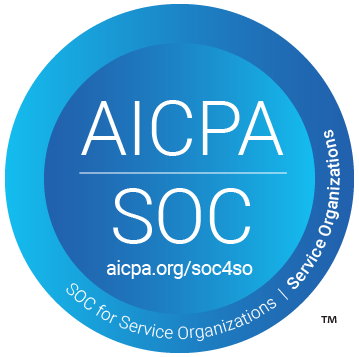Modern delivery cycles face rising complexity and nonstop releases, so DevSecOps enters the scene as a unifying model for speed with protection. The approach integrates security across planning, code, build, test, deployment, and operations, without slowing outcomes or fragmenting responsibilities.
Upcoming sections define what is DevSecOps, contrast DevSecOps vs. DevOps, and outline adoption paths to keep security and speed aligned across real engineering lifecycles. Keep reading!
What is DevSecOps?
DevSecOps is an approach where development, security, and operations integrate across every phase of the software lifecycle, with security treated as a shared responsibility. The practice extends DevOps culture with automated controls, policy enforcement and continuous validation, embedded across pipelines and environments.
From an operational perspective, teams introduce preventive checks early, apply consistent policies across toolchains and standardize evidence for audits.
Definitions from leading providers converge on lifecycle integration, cultural alignment, and automation as core pillars for durability and speed. A concise answer to what is DevSecOps therefore centers on unified practices across people, processes and platforms, rather than bolt-on gates near release.
What’s the difference between DevSecOps and DevOps?
DevOps focuses on collaboration and automation for rapid delivery, while DevSecOps adds first-class security across the same lifecycle, with equal accountability for engineering, security and operations. The key difference resides in where and how security enters daily work, moving from a separate stage into continuous practice.
In conversations about DevSecOps vs. DevOps, teams describe a shift from reactive reviews near deployment toward proactive prevention across code, dependencies, infrastructure templates, and pipelines. DevSecOps encourages policy-as-code, evidence collection and automated checks, so delivery speed aligns with governance and audit readiness without last-minute friction.
How does DevSecOps work in practice?
DevSecOps works through culture, automation, and platform design that place security controls inside daily workflows, from pull requests through deployment and operations.
Teams define policies, integrate tools into pipelines, collect evidence automatically, and maintain continuous feedback across disciplines.
Security is automated and integrated into CI/CD pipelines
Pipelines run source composition scans, secret detection, static analysis, and container image checks before promotion, with signed artifacts and traceable provenance across environments.
Evidence attaches to build outputs, which supports change management, compliance reviews and faster incident investigations without ad-hoc hunts.
Developers use tools to detect and fix issues in real time
Pull requests trigger automated gates and inline feedback, so code owners resolve dependency risks, configuration errors and policy violations before merge.
Fast feedback reduces rework later, improves reliability across services and encourages shared ownership for resilient software without prolonged security queues near release windows.
Security, development, and operations teams collaborate continuously
Security engineers provide guardrails, reusable policies, and reference implementations, while platform and operations groups offer paved roads that encode standards by default.
Development teams adopt these defaults and escalate edge cases through clear workflows, which sustains delivery pace while maintaining consistent protections across infrastructure and applications.
Why is DevSecOps important for modern development?
DevSecOps matters because organizations must ship frequent changes without increasing risk, so integrating controls early reduces exposure and audit pressure. The approach aligns speed and assurance, which produces consistent compliance outcomes, lower remediation costs, and stronger resilience across cloud and hybrid estates.
Reduces vulnerabilities early in the development cycle
Early policy checks, automated scans, and secure defaults prevent risky code and misconfigurations from advancing toward production.
Prevention near the source shortens remediation, avoids emergency rollbacks, and protects delivery schedules, which remains essential when release frequency grows across teams and services.
Ensures compliance with security standards
Evidence collection within pipelines creates traceability for controls, test outcomes, and artifact signatures, which simplifies audits and continuous compliance programs.
Reference architectures from major vendors describe templates and libraries that accelerate adoption while improving consistency across teams and environments.
Avoids costly delays caused by late-stage security issues
When security enters near release, teams face rework, retesting, and scheduling conflicts that stall planned launches.
DevSecOps removes surprise gates by transforming reviews into continuous steps, which lowers cycle time variability and improves predictability for product and operations roadmaps.
How can companies implement DevSecOps successfully?
Successful programs start with culture, clear ownership, and leadership sponsorship, then proceed to automated controls, policy-as-code, and platform integrations.
Teams establish measurable goals, align toolchains with pipelines and iterate on feedback, which embeds security into daily engineering without disruption.
Start with cultural alignment and training
Leaders frame security as a shared mission across disciplines, clarify responsibilities, and invest in enablement for developers and operators.
Security partners offer patterns, threat models and code examples, while platform teams provide defaults that encode standards, which encourages adoption without prolonged negotiations or manual gatekeeping.
Choose tools that support automated security testing
Select tools that run within pull requests and pipelines, cover code, dependencies, containers, and infrastructure templates, and publish machine-readable results.
Integration with repositories and deployment systems enables consistent gates, artifact signing, and policy enforcement, which strengthens integrity across environments with minimal friction on delivery teams.
Embed policies and monitoring into pipelines
Express guardrails as code, store them with application repositories, and execute checks automatically across stages.
Capture evidence for audits with each build, track provenance and maintain observability across runtime, which improves incident response while reinforcing compliance programs with verifiable, repeatable processes.
Collaborate with partners who specialize in secure DevOps environments
Specialist partners such as The Ksquare Group help assess current maturity, design reference architectures, and accelerate integrations across cloud providers and tooling ecosystems.
Engagements often deliver paved roads, policy libraries and enablement programs, which shorten time to consistent adoption and reduce drift across teams working under ambitious delivery goals.
DevSecOps provides a practical path where protection and pace reinforce each other across the lifecycle, not a bolt-on near release. More context, case patterns, and modernization support appear on The Ksquare Group’s website, with guidance tailored to complex environments and product roadmaps that demand dependable evolution.
Summarizing
What is DevSecOps?
DevSecOps integrates security into development and operations across phases, with shared accountability, automated controls and continuous feedback. Teams deliver faster releases, fewer vulnerabilities, better compliance and audit evidence.
What is the difference between DevOps and DevSecOps?
DevOps improves collaboration and automation for rapid delivery, while DevSecOps embeds security as a shared responsibility across the lifecycle. Security moves from late checkpoints to continuous controls within code, pipelines, and runtime.
What a DevSecOps does?
A DevSecOps engineer integrates security into development and operations, defines policies as code, automates checks, manages risk across dependencies and infrastructure, enables feedback for developers and supports audits with clear evidence.
image credits: Freepik



